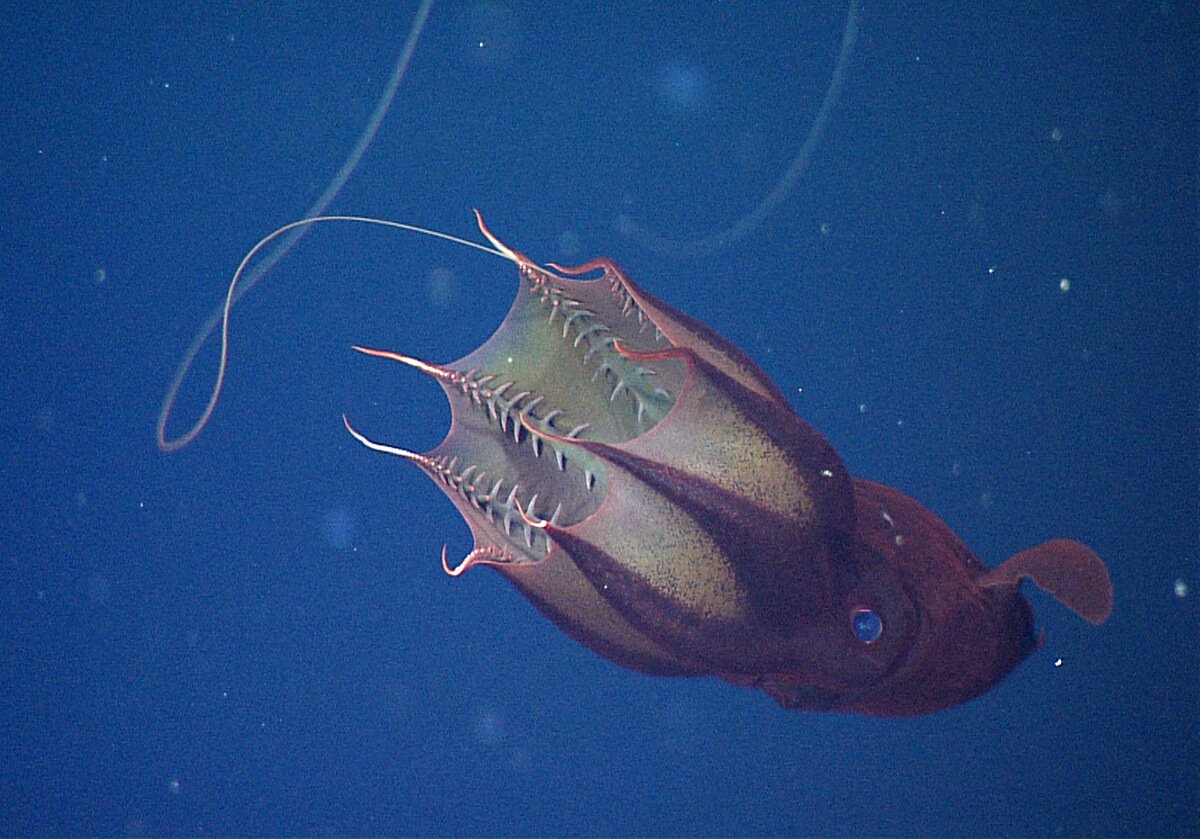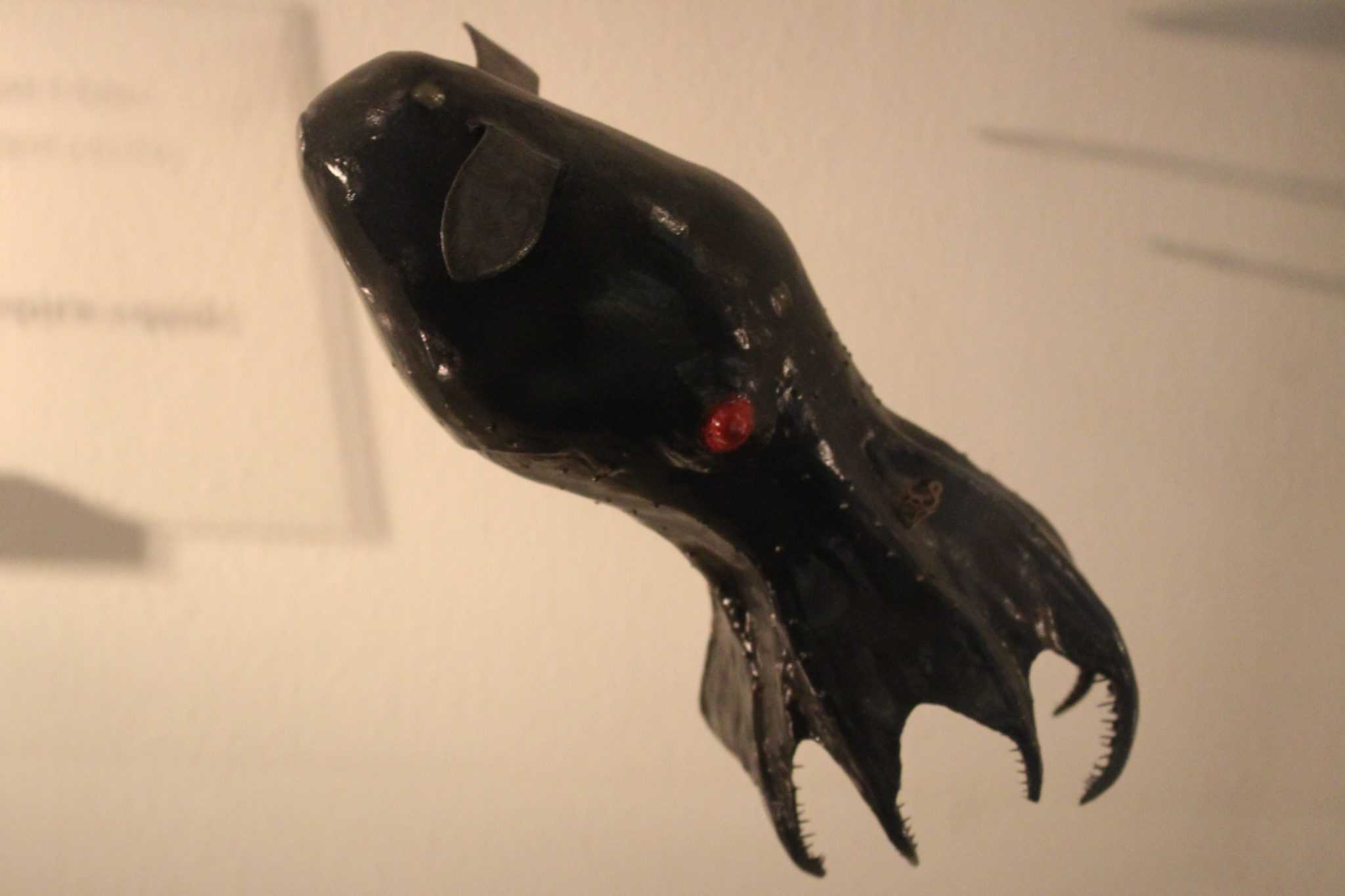Vampire Squid - The Mysterious Creature Of The Deep Sea
There’s a creature lurking in the deep, dark ocean that has fascinated scientists and marine enthusiasts for years. It’s called the vampire squid, and despite its spooky name, it’s not the bloodthirsty predator you might imagine. This small cephalopod is a fascinating example of life thriving in one of the harshest environments on Earth—the deep sea. With its unique adaptations, the vampire squid has managed to survive in areas where oxygen levels are extremely low, and sunlight never penetrates.
Found in tropical and temperate oceans, vampire squids live at depths of around 2,000 to 3,000 feet, where there’s no light at all. Scientists have been studying these elusive creatures to understand how they’ve adapted to such extreme conditions. Their bioluminescent organs and large eyes allow them to see in the dark and communicate through light, making them truly remarkable. So, what exactly is a vampire squid, and why is it so intriguing?
As we delve deeper into the world of the vampire squid, we’ll uncover its fascinating traits and behaviors. From its peculiar feeding habits to its ancient lineage, there’s a lot to learn about this mysterious deep-sea dweller. Let’s explore the secrets of the vampire squid and discover why it’s often referred to as a living fossil.
What Exactly is a Vampire Squid?
The vampire squid, scientifically known as Vampyroteuthis infernalis, might sound like a creature straight out of a horror story, but it’s far from terrifying. Its name, which roughly translates to “vampire squid from hell,” gives it an ominous reputation, yet it’s actually quite peaceful. Unlike its namesake, the vampire squid doesn’t suck blood or hunt for prey. Instead, it feeds on marine snow, which is a mix of dead organic matter that sinks from the upper layers of the ocean.
One of the most striking features of the vampire squid is its size. It’s a rather small creature, typically growing to about a foot in length. But what it lacks in size, it makes up for in uniqueness. The vampire squid has large, round fins that resemble ears, giving it a somewhat adorable appearance. Its body is covered in spiky structures called cirri, which are actually soft and harmless, despite their menacing look.
Where Does the Vampire Squid Live?
You might be wondering where exactly the vampire squid calls home. Well, it resides in the deep midwater regions of the ocean, typically at depths of 2,000 to 3,000 feet. These areas are completely devoid of light, making them some of the darkest places on the planet. The vampire squid thrives in these conditions, using its bioluminescent organs to produce light and communicate with other creatures in the dark.
- True Winter Color Palette
- Four Seasons Orlando Baby
- %D9%8A%D9%84%D8%A7 %D9%84%D8%A7%D9%8A%D9%81
- Steve Wilks
- Benny Andersson
Interestingly, the vampire squid is found in both tropical and temperate oceans. It seems to prefer areas with extremely low oxygen levels, where most other marine life can’t survive. This ability to live in oxygen minimum zones is one of the reasons why scientists are so interested in studying the vampire squid. By understanding how it survives in such harsh conditions, they hope to gain insights into the broader mysteries of deep-sea life.
Why Does the Vampire Squid Have Such Large Eyes?
One of the most notable features of the vampire squid is its enormous eyes. In fact, it has the largest eyes relative to its body size of any animal in the world. But why does it need such big eyes? Well, it’s all about adaptation. In the pitch-black depths of the ocean, having large eyes allows the vampire squid to detect even the faintest traces of light. This is crucial for spotting potential predators or prey, as well as for communicating with other vampire squids.
So, how does the vampire squid use its big eyes? It tends to rely on bioluminescence to communicate and defend itself. By producing light through specialized organs, it can create dazzling displays that confuse predators or signal to other squids. This ability to manipulate light is just one of the many fascinating adaptations that make the vampire squid such a unique creature.
How Does the Vampire Squid Feed?
Feeding habits are a key aspect of understanding any animal, and the vampire squid is no exception. Unlike most squids, which actively hunt for prey, the vampire squid takes a more laid-back approach to feeding. It primarily consumes marine snow, which consists of dead plankton, fecal matter, and other organic debris that sinks from the surface of the ocean. This diet might not sound appetizing, but it’s perfectly suited to the vampire squid’s slow metabolism.
Here’s how it works: the vampire squid uses its two long filaments to capture particles of marine snow as they drift past. These filaments are covered in mucus, which helps trap the particles and bring them closer to the squid’s mouth. Once the food is within reach, the vampire squid uses its cirri to transfer the particles to its beak, where they’re consumed. This method of feeding is incredibly efficient, allowing the vampire squid to survive in areas with very little available food.
Is the Vampire Squid Really a Living Fossil?
You might have heard the term “living fossil” used to describe the vampire squid, and there’s a good reason for that. This creature has remained relatively unchanged for millions of years, with fossil records showing that its ancestors existed over 300 million years ago. In a way, the vampire squid is like a window into the past, offering scientists a glimpse of what life in the ocean was like during prehistoric times.
Despite its ancient lineage, the vampire squid is not entirely primitive. It has developed some remarkable adaptations that allow it to thrive in the modern deep sea. For example, its bioluminescent organs and oxygen metabolism are highly advanced features that enable it to survive in low-oxygen environments. So, while the vampire squid might be considered a living fossil, it’s also a testament to the resilience and adaptability of life on Earth.
What Does the Vampire Squid Look Like?
Let’s talk about the appearance of the vampire squid, which is just as fascinating as its behavior. Its body is covered in a dark, velvety skin that gives it a somewhat ghostly appearance. The squid’s eight arms are connected by a web of skin, creating a cloak-like structure that it can use to defend itself. When threatened, the vampire squid can invert this cloak, revealing its spiky cirri and creating the illusion of a much larger, more intimidating creature.
Another interesting feature of the vampire squid is its color-changing ability. Depending on the lighting conditions, its skin can appear red, black, or even blue. This ability to change color helps the vampire squid blend into its surroundings and avoid detection by predators. Overall, the vampire squid’s appearance is both mysterious and mesmerizing, making it a true marvel of the deep sea.
How Does the Vampire Squid Reproduce?
Reproduction is another important aspect of the vampire squid’s life cycle. Like most cephalopods, the vampire squid reproduces through internal fertilization. The male transfers sperm packets to the female using a specialized arm called a hectocotylus. Once fertilized, the female lays eggs, which she carries with her until they hatch. This method of reproduction ensures that the eggs are protected from predators and have a better chance of survival.
Interestingly, the vampire squid has a relatively long lifespan for a cephalopod, living up to eight years in the wild. This allows it to reproduce multiple times throughout its life, increasing the chances of passing on its genes to future generations. The slow growth rate of the vampire squid is thought to be an adaptation to the low-food environment of the deep sea, where energy conservation is key to survival.
How Does the Vampire Squid Defend Itself?
Living in the dark depths of the ocean, the vampire squid has developed some clever strategies for defending itself against predators. One of its most effective defenses is its ability to produce light through bioluminescence. By flashing its light organs, the vampire squid can create a dazzling display that confuses or startles potential attackers. This is often enough to deter predators or give the squid time to escape.
Another defense mechanism is its ability to invert its cloak, revealing its spiky cirri and creating the illusion of a larger, more intimidating creature. This tactic is particularly effective against smaller predators that might be deterred by the sight of sharp spikes. Overall, the vampire squid’s combination of light manipulation and physical defense makes it a formidable opponent in the deep sea.
Table of Contents
- What Exactly is a Vampire Squid?
- Where Does the Vampire Squid Live?
- Why Does the Vampire Squid Have Such Large Eyes?
- How Does the Vampire Squid Feed?
- Is the Vampire Squid Really a Living Fossil?
- What Does the Vampire Squid Look Like?
- How Does the Vampire Squid Reproduce?
- How Does the Vampire Squid Defend Itself?
Summary of the Vampire Squid's Fascinating Traits
To sum it up, the vampire squid is a truly remarkable creature that has adapted to life in one of the harshest environments on the planet. Its unique features, such as its bioluminescent organs, large eyes, and ability to feed on marine snow, make it a fascinating subject for scientists and marine enthusiasts alike. By studying the vampire squid, we can gain valuable insights into the mysteries of deep-sea life and the incredible adaptability of life on Earth.
So, the next time you hear about the vampire squid, remember that it’s not just a spooky name—it’s a creature that has evolved to thrive in the darkest corners of the ocean. And who knows? Maybe one day, we’ll discover even more amazing things about this enigmatic deep-sea dweller.

Vampire squid | Animals | Monterey Bay Aquarium

Vampire Squid Facts: Ancestors Of The Jurassic Seas! - OctoNation - The

Vampire Squid Animal Facts - Vampyroteuthis infernalis - A-Z Animals